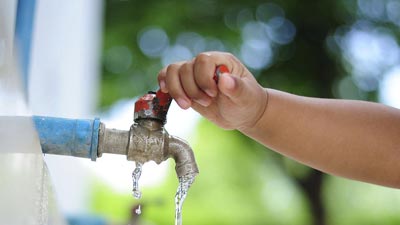I found some interesting information I was trying to find out about faucet flow. I would like to share what I have researched with you.
What is the average flow rate of faucets? The average flow rate of faucet is between 1.0 GPM (gallons/Min) and 1.5 GPM. Studies show that on average people open their faucet to a flow rate between 1.0 GPM and 1.5 GPM. By Federal Standards, all faucets are subject to flow rate of 2.2 GPM maximum at 60 psi (Pounds/inch).
The maximum flow rate allocated for faucets is 2.2 GPM according to Federal Standards. Nonetheless, the flow rate can be reduced to 0.8 GPM without affecting the water pressure. Furthermore, it would also be significant saving on your water bill.
How to measure the faucet flow rate by yourself?
To measure the flow rate of your faucet, you need a container large enough to hold about 1 gallon (3.75 Litres) of water, a measuring cup and a stopwatch.
- Place the container under the faucet.
- Open the faucet and at the same time start the stopwatch timer. It’s important to run these two actions at the same time. Note: If the maximum flow rate is what is being measured, then the faucet needs to be open fully. This includes both the hot and cold nobs too when possible
- Wait for 10 seconds and turn off the faucet.
- Measure the water that is collected in the container. Convert the measured value to gallons and multiply that value by 6. This would be the GPM (Gallons Per Minute) of the faucet.
How to Reduce Faucet Flow Rate?
A faucet aerator reduces the flow rate. the tap aerators are often located at the end of the appliance. They are usually screwed onto the faucet head. Thus, it creates a droplet-free flow of water mixed with air. This method of reducing the flow does not affect the water pressure.
The U.S. Environmental Protection Agency’s (EPA’s) WaterSense program published a specification. This specification labels water efficient high performance faucets and faucet accessories. It also certifies use between 0.8 GPM (pounds per square inch) at 20 psi and 1.5 GPM at 60 psi. And for public facilities it is 0.5 GPM.
How to elevate faucet flow rate?
In most cases, you can increase the flow of the faucet by replacing the faucet aerator with a higher GPM model. But before going out and buying a new one, it helps to determine whether the aerator is the real problem. To check this, completely remove the aerator and open the faucet to see if the flow is good. If so, the problem is in aerator
- Low flow faucet aerator – If this is a problem, the aerator can be replaced with a higher flow unit or eliminated entirely. However, as you review these options, be sure to determine the maximum statutory flow allowed in your area.
- Plugged aerator screen – Over time, mineral deposits and deposits tend to prevent faucets. You can loosen the hint screw and sprinkle vinegar on it. Scratch the particles with a toothpick. If the sediment is difficult to remove, it may be necessary to replace the faucet head completely.
- Check shut-off valves
- Faucet supply tube
Did You Know?
- Studies show that closing the faucets while we brush our teeth, we can save about 3000 gallons of water each year.
- Replacing showerheads with WaterSense-labeled models can save 4 gallons of water every time you take a shower.
- The old, inefficient faucet and ventilator, replaced by a model with the WaterSense label, can save 700 gallons of water annually.
- Replacing a standard clock timer with an irrigation controller labeled WaterSense can save almost 8,800 gallons of water at home.
- aerator that can be installed over faucets with the WaterSense label or existing bathroom faucets are about 30% more efficient than standard faucets, while providing ample flow.
- Homes that earn the WaterSense label offer WaterSense-labeled sanitary appliances, efficient hot water smart landscape design, and many other features that will help your home save water for years to come.
People Also Ask
Here are some frequently asked questions related to faucet flow when talking about faucet flow. I think this answer will be helpful. So I thought I would include them here.
What is a good flow rate for a bathroom faucet?
Generally, a good faucet flow rate is about 1.5 GPM or even 0.5 GPM (compliant with WaterSense standard).
What is the average flow rate of a bathtub faucet?
The average flow rate of the faucet for bathtub is approximately 4 to 7 GPM.
What is the average household water flow rate?
The average American household needs 100 to 120 gallons per person per day and flow rate of 6 to 12 GPM. It may vary depending on the size of the family.
If you want to know how to buy a faucet, pleaes send us an email: info@vigafaucet.com
Website:www.vigafuacet.com
 VIGA Faucet Manufacturer
VIGA Faucet Manufacturer 
